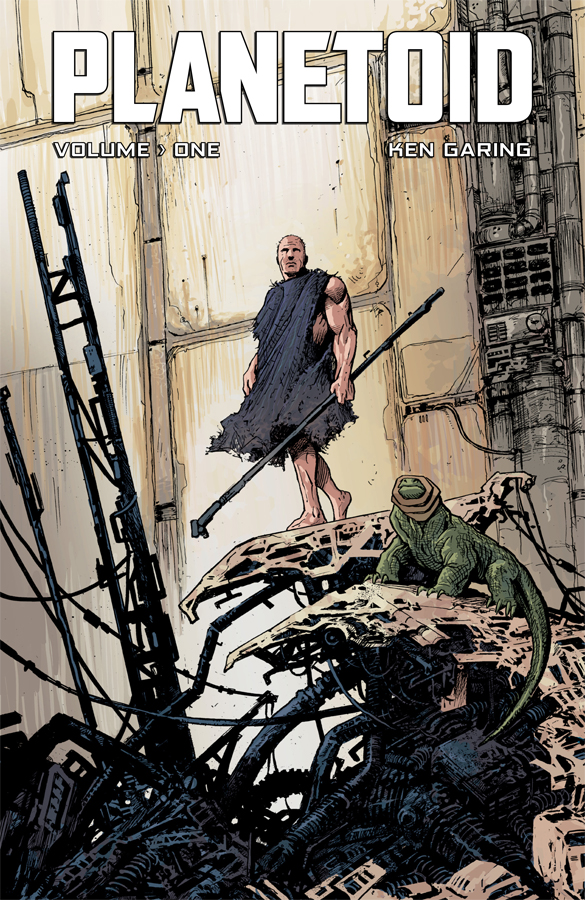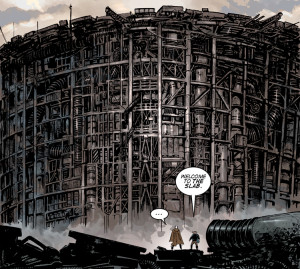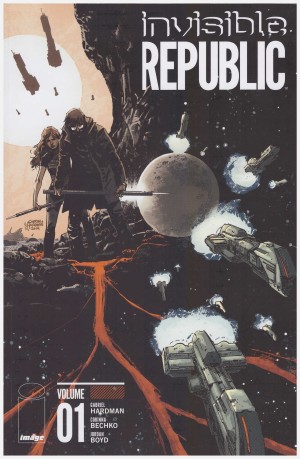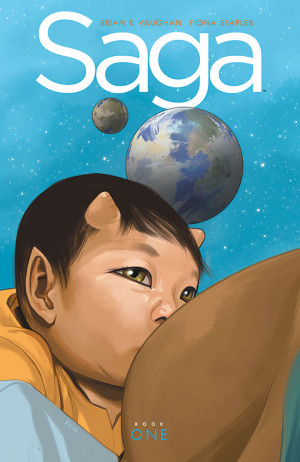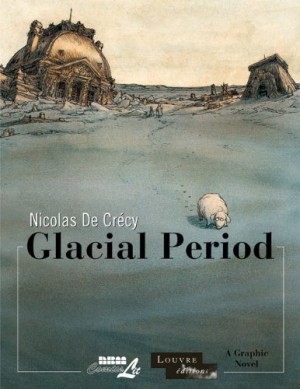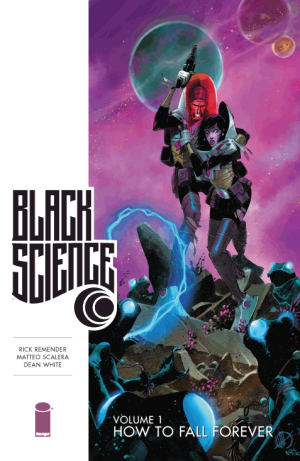Review by Jamie McNeil
A job goes wrong and space pirate Silas crash lands on a desert planet with an abnormally high electro-magnetic field deep within Ono Mao territory. In this harsh climate scattered with the wreckage of various spacecraft, Silas has to survive the elements and avoid patrols of roaming cyborgs called Rovers who enslave any humanoids they encounter for the Ono Mao. While initially only interested in surviving and finding a way off the planet, Silas finds himself the unlikely leader of a growing settlement of other survivors both human and alien alike, some stranded like him and others the nomadic descendants of miners and slaves. As the community grows and learns to work together Silas finds himself changing, but just as he thinks he has found redemption the Ono Mao and their Rovers threaten his peace to make the one time slaver the enslaved.
This is a very good debut for writer and illustrator Ken Garing, a tale of survival and redemption that uses a variety of sci-fi tropes as inspiration. Planetoid’s killer cyborgs oppressing humanity are inspired by cult classic Screamers, while antagonistic alien species learning to co-operate peacefully to survive is reminiscent of Enemy Mine. Even video games, like the apocalyptic survival RPG Fallout and space epic Mass Effect series, have left their mark. Despite the influence, Planetoid works because Garing has clearly put his heart and soul into this, and both the art and the writing imbue the story with a heady sense of hopefulness despite the hues of browns, greys and blacks Garing employs to contrast the stark environment.
Garing uses big frames to tell his story, the wreckage and debris that litters the landscape well detailed but neither overpowering each scene. The rovers are ramshackle contraptions with various blades and other wicked looking weapons attached to them, the detail adding menace. The Ono Mao themselves are a macabre blend of misshapen heads, utterly grotesque, but their aloof view of the world around them is disturbing. That they believe themselves superior, and all else commodities to be exploited, is palpable and the way they rationalise cruelty is terrifying. Where the art loses its charm is when males ripple with muscle, and love interest Onica is rendered as a well-toned buxom redhead with unblemished skin. Not likely in that environment. Additionally Silas’s transformation from survivor with leadership skills to foreseen saviour in the matter of two sentences is jarring.
As mentioned earlier, Hopefulness permeates Planetoid and this is its saving grace. Garing nurtures this initially with barely noticeable splashes of brighter colour among the brown, intensifying with the promise of freedom from oppression. Silas’s journey of survival and redemption as he learns to value the people around him makes this a story of hope, revolution, freedom, independence, the indomitability of the human spirit, and the brotherhood of man (or aliens in this instance). Planetoid is an enjoyable story bursting with great art, another example of what creators are capable of producing when they are given the freedom to explore their imagination and run with their own vision of what a story should look like.
The plan was to publish further collections containing one-shots and tie-ins. As yet, nothing has been forthcoming.
